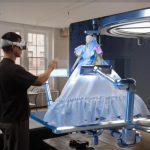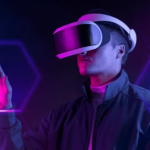As we transition into the Web3 era and witness the burgeoning growth of the Metaverse, avatars have emerged as far more than just digital stand-ins or playful alter egos. They’re becoming critical components in how we express ourselves, conduct business, and interact in new realities. With the assumption that interoperability will become a standard feature, thanks to ongoing efforts by various companies, the scope of avatars is bound to expand in unprecedented ways. This blog explores the multifaceted roles of avatars in this new frontier.
The Significance of Avatars in Web3 & The Metaverse
In the Web3 environment and the Metaverse, avatars are not mere superficial icons; they serve as your digital identity and personalized interface. They allow for a level of interaction and presence that extends beyond the capacities of traditional web interfaces. Your avatar can own digital assets, earn income, and even sign smart contracts. The digital persona effectively becomes an extension of your real-world persona, infused with capabilities that are only possible in a decentralized and interconnected environment.
The Evolutionary Path of Avatars
Avatars have come a long way from their early days as static icons. With the advent of AI, machine learning, and blockchain technology, the future promises avatars that are self-evolving, increasingly complex, and deeply customized. We can expect real-time emotional responsiveness, dynamic skill-sets, and even avatars that can autonomously conduct tasks on behalf of the user. The boundaries between the virtual and real worlds are likely to blur, providing a seamless transition between different realms of existence.
Use Cases: Current and Potential
Current Use Cases
- Social Interaction: Platforms like VRChat and Decentraland use avatars as the primary mode of interaction.
- Virtual Economy: Buying, selling, and trading digital assets through avatars is already a reality.
- Education: Virtual campuses use avatars to simulate real-world classroom experiences.
Future Use Cases
- Virtual Workspaces: Avatars will populate offices, conduct meetings, and even perform tasks.
- Healthcare: Imagine a future where avatars can represent patients in virtual consultations.
- Politics and Governance: Avatars could act as representatives in digital forums and voting systems.
The Fashion Paradigm Shift
The impact of avatars on fashion is monumental. Digital couture and virtual fashion shows are already gaining traction. As we spend more time in virtual worlds, fashion could become less about physical utility and more about digital expression. Renowned brands are already creating digital-only clothing lines, and as avatars gain complexity, the demand for high-end digital fashion is likely to soar.
The Question of Identity
Avatars pose intriguing questions about identity in both current and future contexts. They allow for an exploration of multiple facets of one’s personality, offering a playground for identity experimentation. The digital realm is less constrained by social norms, encouraging freer expression. As avatars become more integrated into our lives, they may reshape our understanding of identity, challenging the singular “self” and giving way to a more fluid, multifaceted sense of identity.
The Celebrity Avatar Boom
Some notable personalities have already embraced avatars that work around the clock, participating in social media, endorsing products, or even performing in virtual concerts. As technology advances, the implications could be profound. Imagine an Elvis Presley avatar performing new songs, or a Marilyn Monroe avatar starring in new films. The potential for eternally “alive” celebrities could change the entertainment industry profoundly.
XR/AR/VR and the Avatar Ecosystem
Avatars are essential components in the expanding realms of Extended Reality (XR), Augmented Reality (AR), and Virtual Reality (VR). They serve as personalized interfaces, help in skill training simulations, and can even guide users through complex data visualizations. Projects like Oculus Avatars and Apple’s ARKit are pioneering the integration of avatars in these domains, pushing the boundaries of what is possible.
Conclusion
The emergence of avatars in the Web3 and Metaverse ecosystems marks a profound shift in how we perceive identity, conduct transactions, and even dress ourselves. Their evolution is far from complete; rather, it has only just begun. As technology continues to advance, avatars are likely to become even more entwined with our daily lives, heralding an era where the divide between the digital and the physical becomes increasingly inconsequential.












